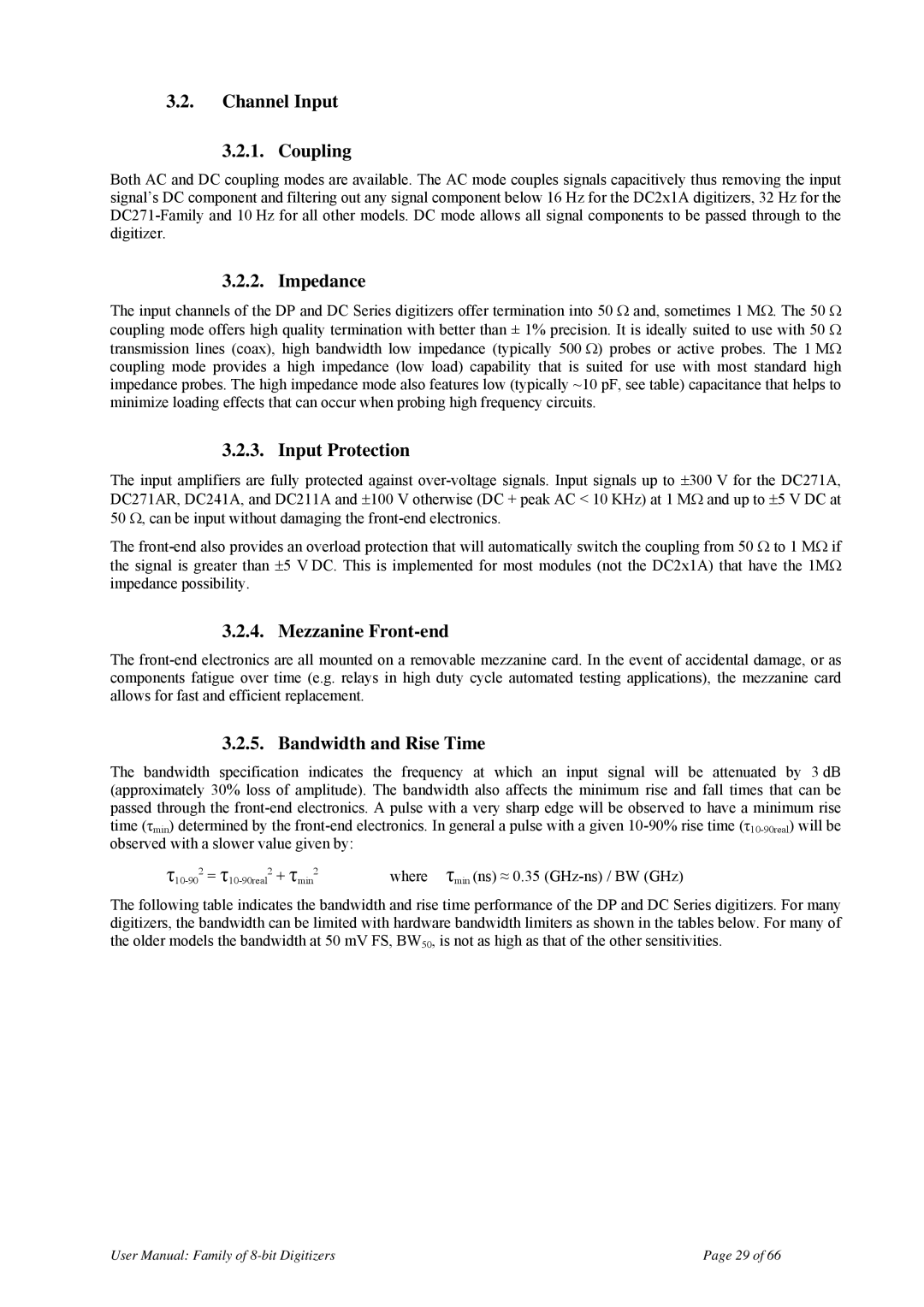3.2.Channel Input
3.2.1. Coupling
Both AC and DC coupling modes are available. The AC mode couples signals capacitively thus removing the input signal’s DC component and filtering out any signal component below 16 Hz for the DC2x1A digitizers, 32 Hz for the
3.2.2. Impedance
The input channels of the DP and DC Series digitizers offer termination into 50 Ω and, sometimes 1 MΩ. The 50 Ω coupling mode offers high quality termination with better than ± 1% precision. It is ideally suited to use with 50 Ω transmission lines (coax), high bandwidth low impedance (typically 500 Ω) probes or active probes. The 1 MΩ coupling mode provides a high impedance (low load) capability that is suited for use with most standard high impedance probes. The high impedance mode also features low (typically ~10 pF, see table) capacitance that helps to minimize loading effects that can occur when probing high frequency circuits.
3.2.3. Input Protection
The input amplifiers are fully protected against
The
3.2.4. Mezzanine Front-end
The
3.2.5. Bandwidth and Rise Time
The bandwidth specification indicates the frequency at which an input signal will be attenuated by 3 dB (approximately 30% loss of amplitude). The bandwidth also affects the minimum rise and fall times that can be passed through the
where τmin (ns) ≈ 0.35 |
The following table indicates the bandwidth and rise time performance of the DP and DC Series digitizers. For many digitizers, the bandwidth can be limited with hardware bandwidth limiters as shown in the tables below. For many of the older models the bandwidth at 50 mV FS, BW50, is not as high as that of the other sensitivities.
User Manual: Family of | Page 29 of 66 |
